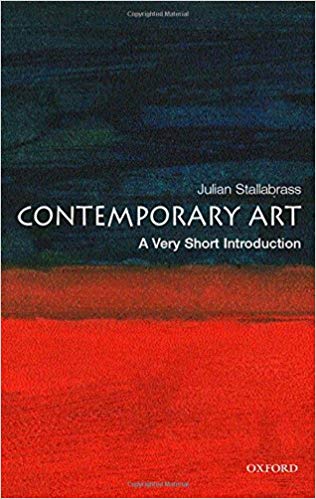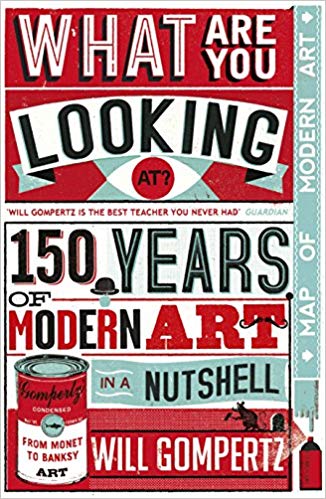We were asked to choose one artist that we feel is relevant to our current practice, and that we think could relevant to Stage 2 projects.
Takashi Murakami is my final choice.

I was thinking to choose Frida, or Yayoi Kusama, or Rose Wylie, but why Takashi Murakami in the end?
Suggested by my artist friend Jigger, during the holiday, I didn’t go outside but stay in my room reading books about art theory, aesthetics, introductions to Modern Art, Postmodern Art, and Contemporary art. There is no exaggeration that this is my first systematic study of art, which totally changed my mind, it made me realized how backward I used to do and think towards art.
I will write my reading notes and review in other blogs. Here I’d focus on what made me decide to choose Takashi Murakami as the relevant artist to my stage 2 practice.
First, reading the Philosophy of Art, written by Hyppolyte Tanie in 1865, made me realize that a work of art is not isolated, but closely connected with times. As what Tanie said in the book, “a work of art belongs to an artist producing it……the artist belongs to the school or family of artists of the time and country……this family of artists is itself comprehended in another whole more vast, which is the world surrounding it, and whose taste is similar…….”

It made me willing to study how each school or family of artists were formed in the history, on top of this — study the contemporary art — I need to know what is happening now. ( Before, no matter how tutors explained we need to understand historical and contemporary art, I couldn’t understand, finally, I got it.)
Second, in the book of Contemporary Art: A very short Introduction, Julian Stallabrass clearly analyzed how art was influenced by economics an politics, since the end of the Cold War in 1989, driven by the Neoliberalism, trade barriers were broken, free trade syncretized different cultures, groups that have long been ignored started to be successful like feminist and racism. In the era of Globalization, universalism became the key standard first, but later was replaced by multi-cultural diversity, in both global and local characters. In art, showing the difference in cultural identities became a hot topic. At the same time, Neoliberalism brings up consumerism, art has never been so close to commerce, one example is the collaboration between art and fashion brands.

This book reminded me of several keywords — ‘Globalization’, ‘Universalism’, ‘Cosmopolitanism’, ‘Cultural Diversity ‘ — which I kept talking in my previous Organization for 6 years before being an artist. I thought that after being an artist I don’t need to care about them anymore but paint with my feelings in my own world, but now I understand that I can’t escape, to keep pace with times, I, as an artist, need to be sensible of economics and politics.
Till this point, I knew that I need to choose a contemporary artist who is working on showing her/his identity in both national and international way and better combine art and commerce together.
Then, in the last chapter of What are you looking at?: 150 years of Modern Art in the Blink of an Eye, Will Gompertz, put forward Entrepreneurship in contemporary artists’ activities, He listed several examples — the collaboration between Damien Hirst and advertising manager Charles Saatchi, Tracey Emin and artist manager Jay Jopling, Gagosian and his art business across the world, Jeff Koons, Takashi Murakami, and etc.

The word ‘Entrepreneurship’ caught my eyes because it’s also what I kept talking in my previous 6 years working experience, thanks for being reminded again. What’s more, reading the stories of Takashi Murakami in Will Gompertz humor writings made me so interested in him, I knew that he never hides his ambitions and purpose to build his art business around the world, he even published a book “the Art Entrepreneurship Theory”, which made people judging him a businessman rather than an artist.
Takashi Murakami is an Artist Entrepreneur, like most of the contemporary artists, he used identity and branding to promote himself. He said that “Art and Commerce are one.” He is known for blurring the lines between high and low arts and coined “Superflat” which describes both aesthetics and post-war Japanese culture and society. Before the world war, Japanese art played a key role in the development of modern art, after WWII, the center of the art moved to America, during the stay in New York, Takashi Murakami realized that he had to abandon his overly intellectual Japanese preoccupations and change the balance between west and east. He used globalization tools like traveling, new media, free trade to promote his art and promote Japan in the art world.
Reading till here, I decided to choose Takashi Murakami as the artist relevant to my stage 2 practice, for the reasons below:
1st, growing up with Japanese Animation, I love the element of comics and cuteness which made his art attractive to me. My paintings are also flat, naive and look like comics.
2nd, except painting, he used various media to create his art, from printing to installation, I want to learn from him on new materials and media. What’s more, he also did commercial art like animation and fashion costume, which is also my interest now, I’d love to learn from him to create my costume and fashion brand too.
3rd, I agree with his Art Entrepreneurship Theory and how he uses branding and identity to promote his art and business. I agree to combine art and commerce appropriately in this time. I used to give training about entrepreneurship and leadership, I had working experience in Marketing and PR too, I want to learn from him how to build and promote my brand and art business.
4th, I like the way how he uses Japanese culture to build his identity to be successful instead of looking after western contemporary art. I used to work on AIESEC which envision to achieve peace by designing cross-cultural understanding projects and developing leadership, I want to learn from him to build my strong identity, not limited to China but the whole Asia from east to west, and show the cross culture in my art.
During this project, I will research more about his theory, artworks, art entrepreneurship, and business strategies.

Reference:
the Philosophy of Art, Hyppolyte Tanie, 1865
Contemporary Art: A very short Introduction, by Julian Stallabrass, 2006
150 years of Modern Art in the Blink of an Eye, Will Gompertz, 2012
Takashi Murakami’s life and legacy, the Art Story
Mowen
Royal College of Art, London
2018.11.5






Hi Mowen,
Thanks for this post. Murakami is quite a character and I really enjoy his art. I remember seeing his show at the Palace of Versailles in 2010 (https://www.theguardian.com/world/gallery/2010/sep/10/takashi-murakami-palace-versailles). It was something!
I particularly like his take on ‘high’ and ‘low’ cultures as we used to call them (likely we don’t anymore) and the fact that he annuls the differences. He reminds me of Jeff Koons his this way, who I am fascinated with (similar take on entrepreneurship too).
Maxime
赞赞
Thanks for the comment Maxime, if I don’t remember wrong, when Murakami went to New York, he was influenced by Jeff Koons.
赞Liked by 1 person
A great read! I enjoyed reading about the relationship between society, history and politics and art. Reading your comments about Murakami’s Art Entrepreneurship Theory reminds me of the Artist Andy Warhol. If you an artist today there is definitely a lot you need to know besides your craft. Best of luck!
赞赞